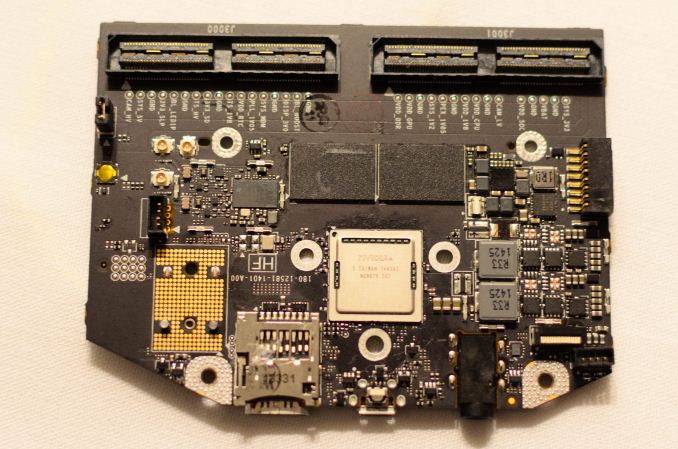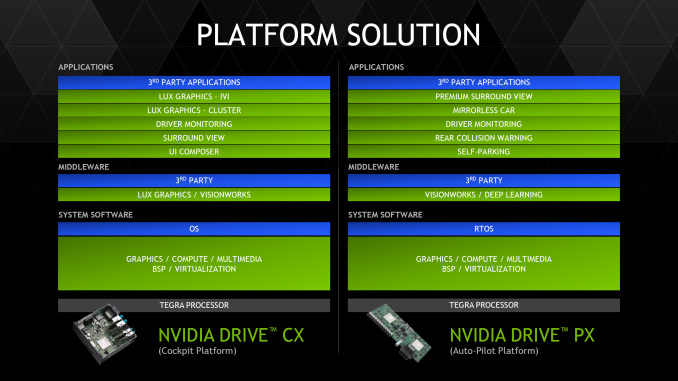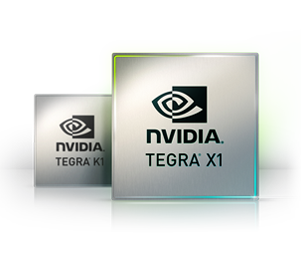NVIDIA Tegra X1 Preview & Architecture Analysis
by Joshua Ho & Ryan Smith on January 5, 2015 1:00 AM EST- Posted in
- SoCs
- Arm
- Project Denver
- Mobile
- 20nm
- GPUs
- Tablets
- NVIDIA
- Cortex A57
- Tegra X1
Final Words
With the Tegra X1, there have been a great deal of changes when compared to Tegra K1. We see a move from Cortex A15 to A57 on the main cluster, and a move from a single low power Cortex A15 to four Cortex A53s which is a significant departure from previous Tegra SoCs. However, the CPU design remains distinct from what we see in SoCs like the Exynos 5433, as NVIDIA uses a custom CPU interconnect and cluster migration instead of ARM’s CCI-400 and global task scheduling. Outside of these CPU changes, NVIDIA has done a great deal of work on the uncore, with a much faster ISP and support for new codecs at high resolution and frame rate, along with an improved memory interface and improved display output.
Outside of CPU, the GPU is a massive improvement with the move to Maxwell. The addition of double-speed FP16 support for the Tegra X1 helps to improve performance and power efficiency in applications that will utilize FP16, and in general the mobile-first focus on the architecture makes for a 2x improvement in performance per watt. While Tegra K1 set a new bar for mobile graphics for other SoC designers to target, Tegra X1 manages to raise the bar again in a big way. Given the standards support of Tegra X1, it wouldn’t be a far leap to see more extensive porting of games to a version of SHIELD Tablet with Tegra X1.
NVIDIA has also made automotive applications a huge focus in Tegra X1 in the form of DRIVE CX, a cockpit computing platform, and DRIVE PX, an autopilot platform. Given the level of integration and compute present in both DRIVE CX and PX, there seems to be a significant amount of value in NVIDIA’s solutions. However, it remains to be seen whether OEMs will widely adopt these solutions as car manufacturers can take multiple years to implement a new SoC. Compared to the 3-4 month adoption rate of an SoC in a phone or tablet, it's hard to pass any judgment on whether or not NVIDIA's automotive endeavors will be a success.
Overall, Tegra X1 represents a solid improvement over Tegra K1, and now that NVIDIA has shifted their GPU architectures to be targeted at mobile first, we’re seeing the benefits that come with such a strategy. It seems obvious that this would be a great SoC to put in a gaming tablet and a variety of other mobile devices, but it remains to be seen whether NVIDIA can get the design wins necessary to make this happen. Given that all of the high-end SoCs in the Android space will be shipping with A57 and A53 CPUs, the high-end SoC space will see significant competition once again.













194 Comments
View All Comments
Aenean144 - Monday, January 5, 2015 - link
Honestly, why? What does doing that really benefit Apple?chizow - Monday, January 5, 2015 - link
They'll gain access to better GPU IP immediately, if they are going to pay a licensing fee, might as well pay (presumably) more for better IP I suppose.From a software support standpoint, they'd gain 100% compatibility and portability with all the latest OpenGL specs, so you'd have a shared graphics platform there with their iOS platforms. Then they wouldn't have to much around with Metal and iOS API so much, which would make it easier for them to merge the two platforms as the rumors have suggested.
Aenean144 - Monday, January 5, 2015 - link
None of what you state is a material advantage to Apple.The essence of your belief is that Nvidia will have a more powerful GPU solution than what Apple can come up with their own or through ImgTec. A lot of people don't think that will be true.
On top of that, this Tegra X1 SoC does not appear suitable for phones, and moreover, Nvidia appears to be concentrating on embedded applications with higher TDP with the X1. This would pose a problem for Apple as the iPhone is currently their most important product.
chizow - Monday, January 5, 2015 - link
Not having to support two different graphics APIs, one of which is being developed from scratch, isn't a material advantage to Apple?And a lot of people don't think what Nvidia has isn't already better than what Imgtech can produce? Who are you referring to exactly? Realists already know Nvidia's last-gen Kepler is already better than PowerVR rogue. Remember when PowerVR released roadmaps and those same people expected PowerVR Rogue XT 6-core to match Tegra K1 based on paper spec FLOP counts alone? What happened in reality? Apple needed to add ANOTHER 2 cores in a custom 8-core Rogue XT configuration to trade blows with K1.
The whole point of licensing is that even if the Tegra SoC as a whole doesn't fit their needs, they can license the IP and integrate it however they like into their own SoC.....
Yojimbo - Monday, January 5, 2015 - link
He is talking about Apple licensing a GPU from NVIDIA instead of from IMG. The Tegra X1 is not a GPU, it is an SOC targeted at a specific market segment. The target of the Tegra X1 has been set by the market NVIDIA thinks it can penetrate more than by the abilities of the GPU it contains. NVIDIA was not able to penetrate the smartphone market because of a lack of a good modem option. They have since stopped trying, and this is well-known. Apple has access to a modem, so this is not a concern for them. All they need to consider is if licensing a GPU, or GPU IP, from NVIDIA helps them more than licensing from IMG. I think on the same process technology, NVIDIA's offering would be superior, no matter if used in a phone or tablet.lucam - Wednesday, January 7, 2015 - link
Really? Why NV doesn't do any product with GPU in a phone anymore?name99 - Monday, January 5, 2015 - link
Who says nV is WILLING to license? Do they license to anyone else?pSupaNova - Tuesday, January 6, 2015 - link
http://www.anandtech.com/show/7083/nvidia-to-licen...
chizow - Tuesday, January 6, 2015 - link
And they also generate roughly $266 million per year in revenue as a result of their cross-licensing agreement/settlement with Intel. That obviously makes Intel the most likely suitor as the 1st Nvidia SoC GPU IP licensee, since they already have Nvidia GPU IP in their desktop CPU IGPs but still license IMGtech IP for their mobile SoCs.But my bet is on Apple being the 1st major licensee, largely dependent on the outcome of the Samsung/Qualcomm IP litigation.
chitownbarber - Tuesday, January 6, 2015 - link
Per Samsung's track record, the legal eagles will drag things on for years to come. Not sure what Qaulcomm will do? If you think Apple is in negotiations with Nvidia, which I agree with, then they should be coming to an agreement sometime soon to give the GPU engineers Apple has hired to do their mojo? I'm sure Apple would like nothing better to leave Samsung in the dust by exploiting the advanced gaming market that they are inspiring to, along with a rumored do-all living room console.